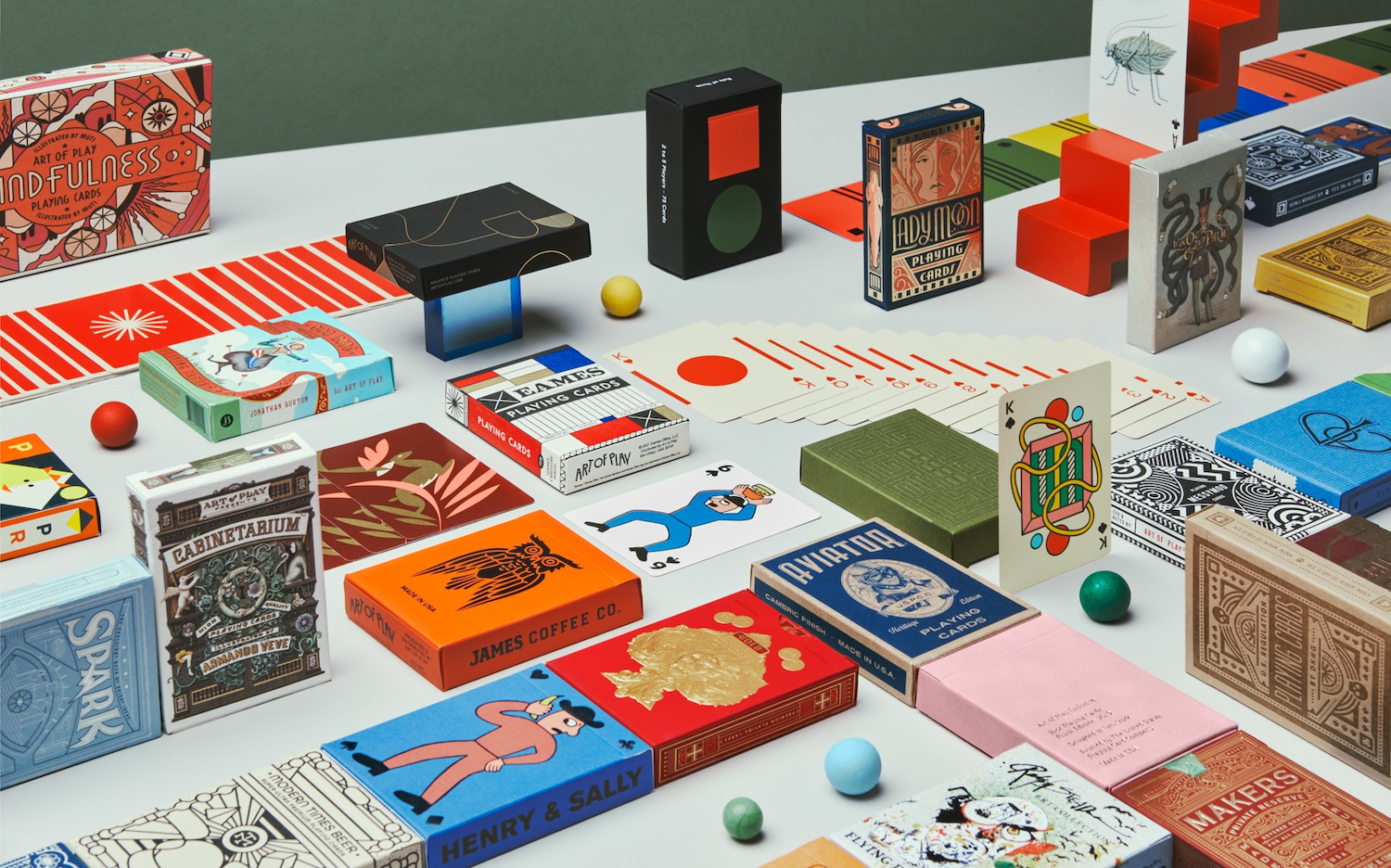In 2012, Dan and Dave Buck found themselves in a dilemma. The founders of Art of Play were working with UK magician Guy Hollingworth to produce an eponymous deck of cards under their Dan & Dave brand. And Hollingworth sought to revive something—replicate the feel of one of his favorite decks: Stud Playing Cards, which was produced by Walgreens from 1980 to 2006.
However, the United States Playing Card Company (USPCC) found that reproducing that style of cards—favored amongst card magicians for its ultra-thin stock—was too risky. Their machines weren’t calibrated for this technique. Still, innovation usually begins with a problem.
“We signed a waiver that said if [the USPCC’s] machines broke, we were liable,” says Art of Play CEO Dave Buck. The risk was worth it, especially since at such a young age, the Buck twins hadn’t built up enough to lose. Upon release, the cards sold out almost instantly; and today, the USPCC charges a premium for what is now known as “crushed stock.” “A lot of the things we do set trends and spark momentum,” Dave says.
For the past 15 years, the Buck twins have generated that momentum through their two brands: Dan & Dave and Art of Play. By spotlighting artists and collaborating with studios like Studio Muti and DKNG, the two brothers from California, along with creative partner Adam Rubin, have helped push custom card design into the mainstream. Largely because the diverse range of cards is something akin to an art museum. “We always wanted to celebrate the artist,” Dave says. “It’s as much their product as it is ours.”
The current state of the playing card industry has been a long time in the making. Dan and Dave’s motivation increased with the 2005 release of Tally-Ho’s “Split Spades.” “Coming across anything that wasn’t Bicycle or Bee or Tally-Ho was a novelty. … So, when David Blaine put out his ‘Split Spades,’ that proved to us that we could maybe do that too—egotistical as that may sound,” Dave says, laughing. Inspired, the Bucks decided that it was time to take a major leap into the custom card market.
Unlike the big three brands at the time (i.e., Bicycle, Bee, or Tally-Ho), making a quality deck didn’t only mean using premium stock, it meant casting the spotlight on the artist’s creative individuality. Very few decks have done this. One rare and early example of this is found in “Vanity Fair No. 41.” The transformational deck, copyrighted in 1895, features unique artwork on every single card. It served as something to strive for.
In 2007, the Buck twins released the first edition of the famed “Smoke & Mirror” playing cards, enlisting Si Scott, who’d worked on global brands like Nike. He designed the iconic whirls of smoke that pull off the serifs of each letter, curling with mystery. It marked the beginning of a decade’s worth of global collaborations.

When discussing playing card design, some draw comparisons to vinyl records, combining functionality with art. “There’s a dual purpose,” Dan Buck says. And the ideas can come from anywhere. Take, for instance, the tranquility-infused “Mindfulness” deck released in 2021. Dan says the idea for the deck spawned from this moment in time where he was bringing observance to meditation and what that can do for individuals. “And then we turned that into a deck,” he says, smiling.
“A lot of it is spontaneous,” Dave adds. “We’ll see something and say, ‘That looks like playing cards.’ And then we explore how to adapt that particular style.”
Such was the case when Adam Rubin heard a podcast interview with Pulitzer Prize-nominated author David Haskell. Shortly after reading his book The Forest Unseen, Art of Play collaborated with Haskell and artist Ellen Litwiller on 2021’s “Eastern Forest” playing cards–a deck of 54 illustrations and scientific prose that capture the flora and fauna of a miniature ecosystem.

“Not many people make decks with art on each card because it’s a huge undertaking,” Dave says. “For us, cards are more than cards. They can be a new medium for an art book. They can be left on the coffee table as a conversation piece. They can inspire. That’s what we try to focus on: What is this in addition to a deck of cards?”
Brad Fulton, another pioneer in the custom market and long-time friend of the Buck twins, has been redefining playing cards with equal measure.
“I want to recreate certain times and atmospheres,” Fulton says. “Cards just come from wanting to hold a piece of my imagination.” He gives a quick example: “I wanted to be in a casino in the 1970s, so I thought, What if I had my own casino?” He’s referring to “Fulton’s Thunderbird Room,” a retro-colored deck seemingly plucked out of some 1960s era, Arizona ephemera.

The majority of his cards, he says, are influenced by his life and his passion for film noir. In fact, for “Clip Joint”—one of his longest running and successful series—Fulton color-matched the tuck case to a Mildred Pierce movie poster he had from the 1940s. “Playing cards are looked at as a commodity,” he says. “But there’s so much more you can do with it. You can tell a story. You can be a visionary.”
Sometimes that vision can take nearly a decade to come to fruition.
Back in 2013, Dan Buck was scrolling through Fulton’s photo archive. As a professional photographer, Fulton had amassed thousands—a gallery of black and white photos that included images of icons like David Lynch, Tony Todd, and Keanu Reeves, as well as a number of noir-inspired and surrealist images. So, Dan asked: “What if you did a photo exhibition as a deck of cards?”
“Fultonal,” which is named after film developing agent Rodinal, took eight years to release because Fulton wasn’t satisfied with the end product. He needed more time. So he remained patient, refusing to rush the project. “The Bucks and I never let go of a good idea. Bad ideas fall away, and the good ones keep going,” he says. “I’m a constant reviser. I’ll hold up a project forever. Dan [Buck] is too; so if we don’t like something, we’re not going to put it out.”
Such was the case the “Starburst” Eames Playing Cards, which took Dan more than one hundred iterations before settling on a design. (The Second Edition of the deck called “Hang It All” is planned for this year.) Same goes for breaking design conventions with pips (i.e., the small symbols in the corner of the card determining suit and rank) in an upcoming deck in collaboration with Pentagram’s Paula Scher. Go back through the Art of Play library, and you’ll notice all the pips are all traditional—save for the Stranger & Stranger “Ultimate Deck” collaboration (which is getting a special anniversary release this year). Scher’s deck is a little different.

“It really breaks the mold, so much so that we’ve struggled to figure out how to print them because of technical constraints,” Dave says.
But technical challenges, like the crushed stock for Guy Hollingworth’s deck, present new opportunities. A deck can be anything you want it to be—even something deeply sentimental. Just look at one upcoming deck under the Dan & Dave name: “Kodiak” was designed as a love letter to Alaska where the Buck twins are currently constructing an A-frame cabin on two acres on an island cliffside as though they were Bond villains.
“Alaska feels at home; nature is so beautiful,” Dave says. “So of course we turned it into a deck of cards.” As kids, the brothers regularly hiked and camped with their grandfather, and the project is one of their lifelong goals.
“The playing card medium,” Dan says, “is an opportunity to explore our interests in a tangible way.”
Art of Play is celebrating its 9th anniversary this August. You can find their most recent playing cards here.
Words by David MacNeal







